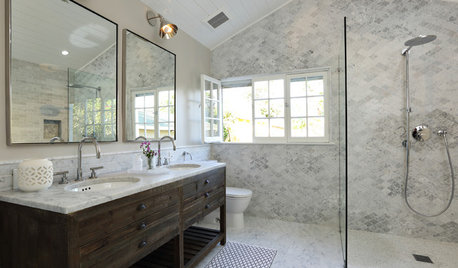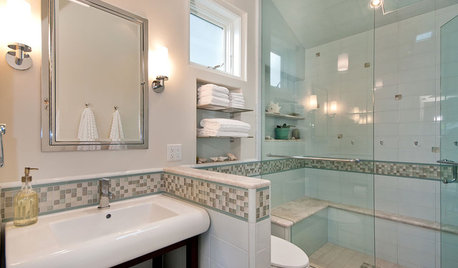Misting vs Humidity Chamber
Scott F Smith
16 years ago
Related Stories

GARDENING GUIDESGot a Hot, Humid Landscape? Add Tropical Flair With Air Plants
Turn tree trunks and walls into lush canvases with plants adapted to the canopies of the rainforest
Full Story
HOUSEPLANTSMaidenhair Fern Brings Lacy Grace to a Room
Give this houseplant damsel lots of water and humidity, and a happy ending can be enjoyed by all
Full Story
HOUSEPLANTSMeet a Palm That's Fine With Fluorescent Light
Get the look of the tropics without the full-on sun and high humidity — parlor palm tolerates regular indoor conditions with aplomb
Full Story
HOUSEPLANTSHow to Grow Orchids Indoors
Orchids are the exotic aristocrats of the flower world and can make themselves comfortable in almost any home
Full Story
DECORATING GUIDESIndoor Gardener: Orchids Bring Beauty to Decor
Beautifully blooming orchids add elegance and grace to entryways, bathrooms and decorative vignettes
Full Story
MOST POPULARRoom of the Day: A Dream Bathroom in 90 Square Feet
A master bathroom in an L.A. historic district features modern amenities and timeless details that tie it to past and present
Full Story
HOUZZ TOURSRegional Design: Charleston and the South Carolina Lowcountry
On the fringes of the South Carolina coast, a range of classic vernacular styles meets modern technology and updated sophistication
Full Story
EDIBLE GARDENSSummer Crops: How to Grow Tomatoes
Plant tomato seedlings in spring for one of the best tastes of summer, fresh from your backyard
Full Story
BATHROOM DESIGN6 Elements of a Perfect Bathroom Paint Job
High-quality paint alone won't cut it. For the best-looking painted bathroom walls, you'll need to get these other details right
Full Story
HOUSEKEEPINGLower Your Heating Bills With Some Simple Weather Stripping
Plug the holes in your house this winter to make sure cold air stays where it belongs: outside
Full StoryMore Discussions






calistoga_al ca 15 usda 9
redneck_grower
Related Professionals
Carson Landscape Architects & Landscape Designers · Marco Island Landscape Architects & Landscape Designers · Harvey Landscape Architects & Landscape Designers · Allentown Landscape Contractors · Edmond Landscape Contractors · Bethel Park Landscape Contractors · Damascus Landscape Contractors · Hawaii Landscape Contractors · Mastic Beach Landscape Contractors · North Lauderdale Landscape Contractors · Peachtree City Landscape Contractors · Wailuku Landscape Contractors · West Orange Landscape Contractors · Wethersfield Landscape Contractors · Vienna HandymanScott F SmithOriginal Author
death_valley
Sherwood Botsford (z3, Alberta)